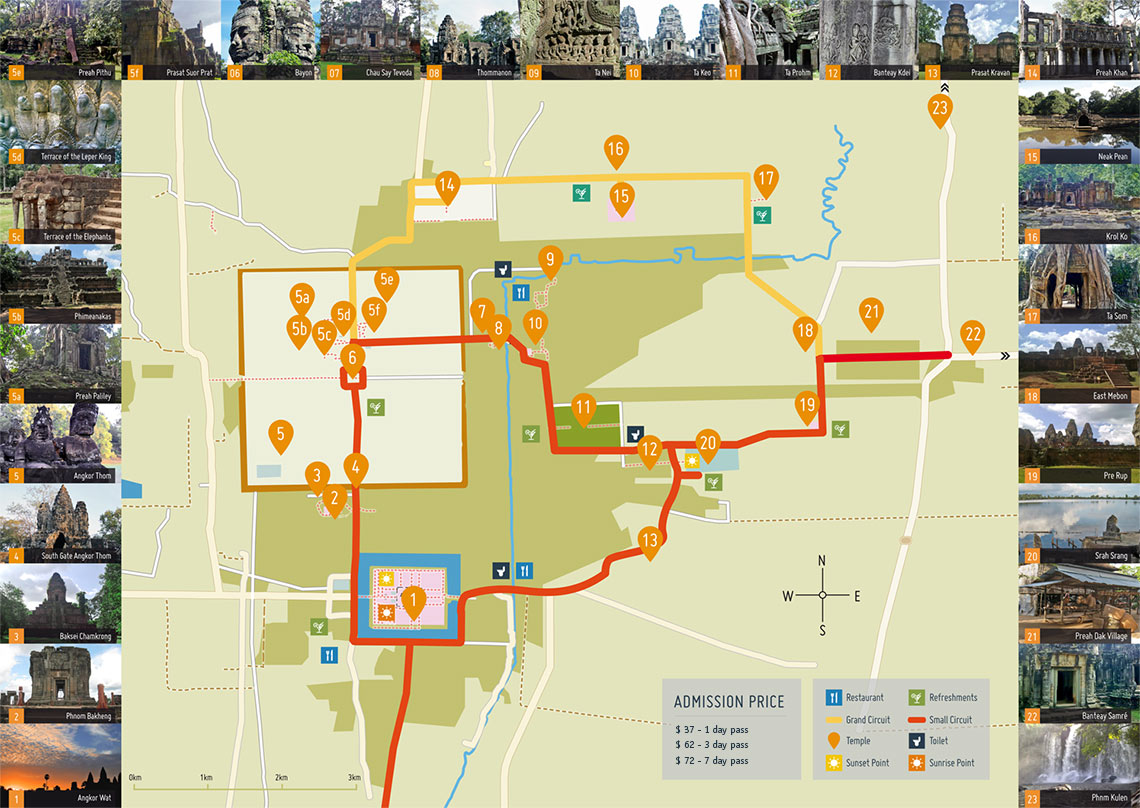No amount of preparation can truly prepare you for the experience of visiting Angkor Wat. Even if you’ve read countless books or scrolled through numerous photos, they simply can’t do justice to the ambience of this extraordinary place. Hidden away in the jungle, this once splendid city of the powerful Khmer Empire continues to exude an enchanting allure of mystery and majesty. Its magic is relentless, captivating every visitor with its grandeur and mystique.
The remnants of a bygone era, it stands as a testament to the architectural prowess and cultural richness of the Khmer Empire. So, when you visit, be prepared to be swept away by its timeless charm.
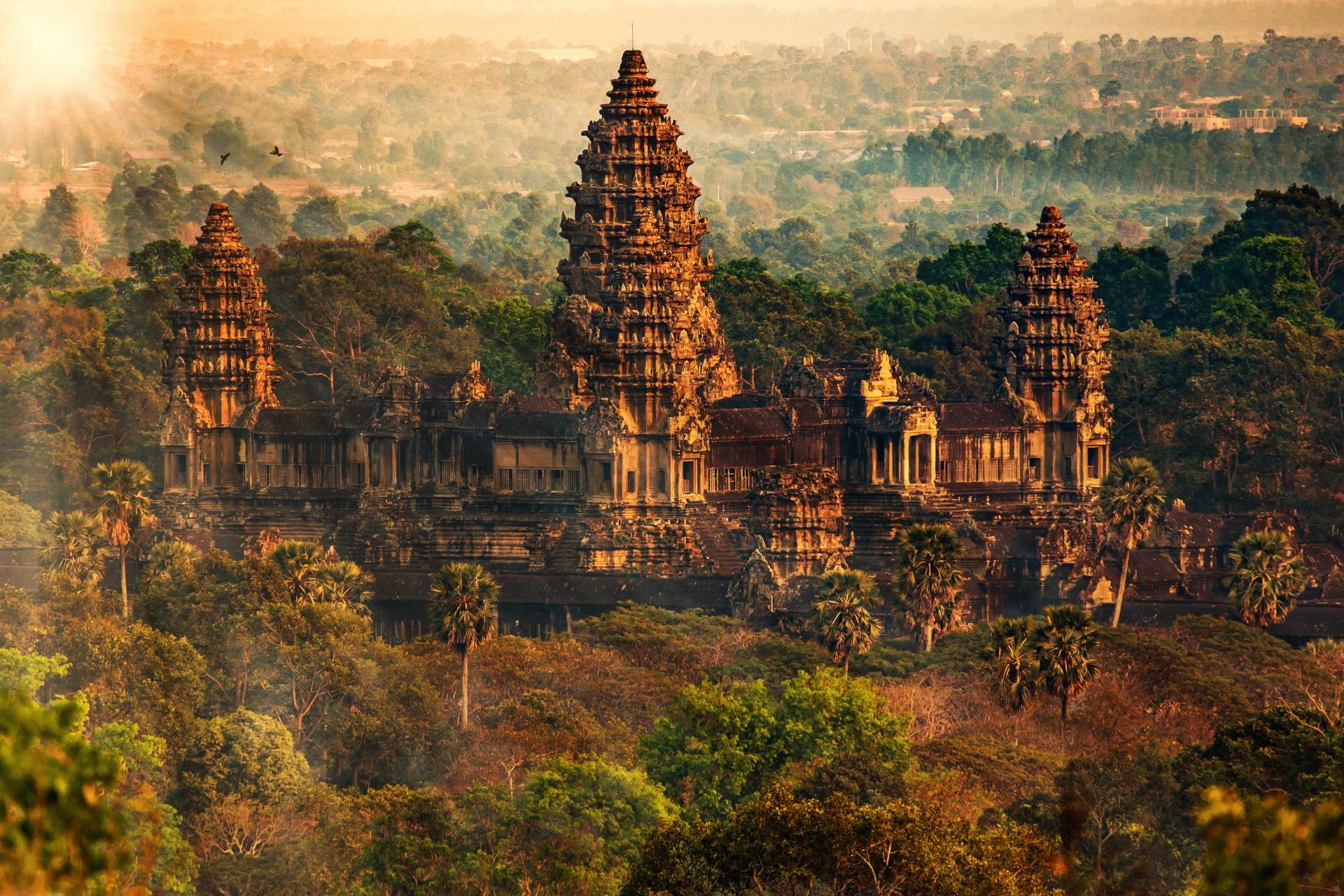
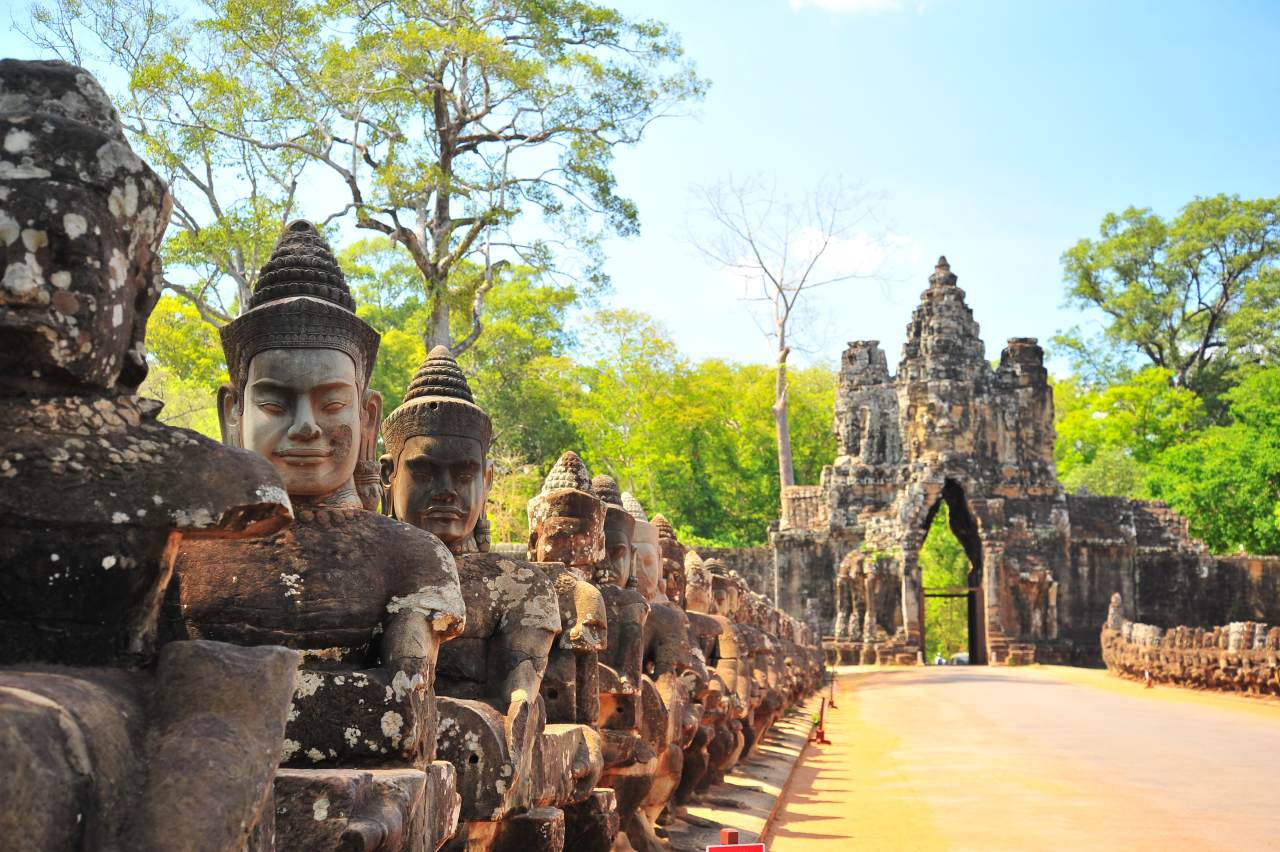
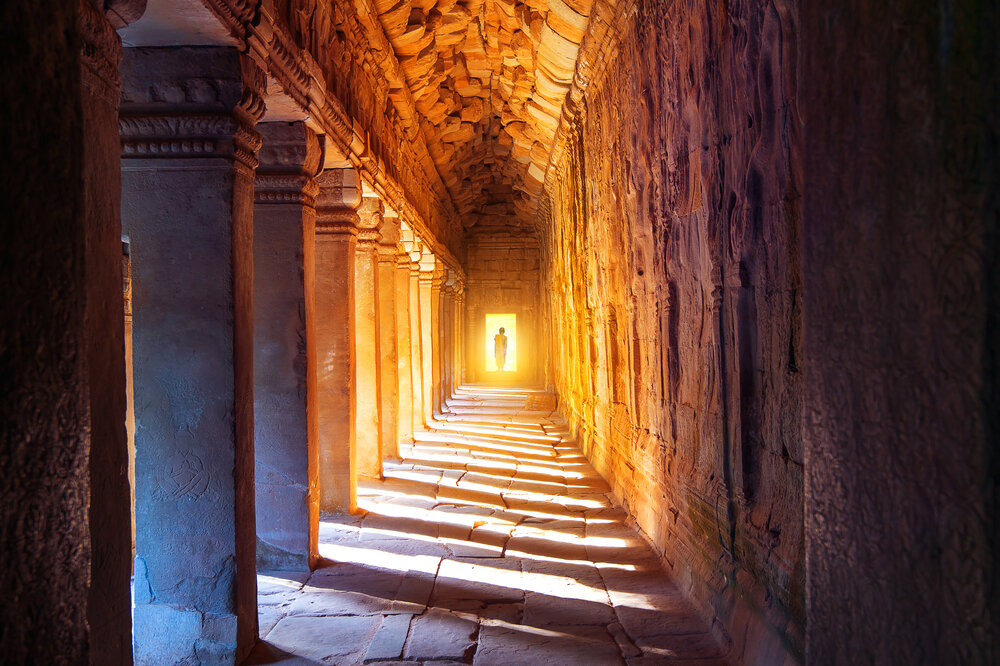
The Angkor temples, a national emblem of Cambodia, symbolize the country’s aspirations for a brighter future. The recent stabilization of the political and security situation has sparked a much-anticipated surge in tourism. This has led to the development of tourist infrastructure, but it also means that Angkor, one of Asia’s most visited and awe-inspiring monuments, is becoming increasingly crowded. This could potentially diminish some of its unique charm over time.
The swift arrival of affluent tourists from the West has also brought about some negative impacts. The overpricing and pretentiousness encountered here are quite unusual for this part of Asia. However, rest assured that this is not the norm for everyone in the area. If you venture a bit off the beaten path, away from the main tourist routes, you’ll find a more authentic experience awaiting you.
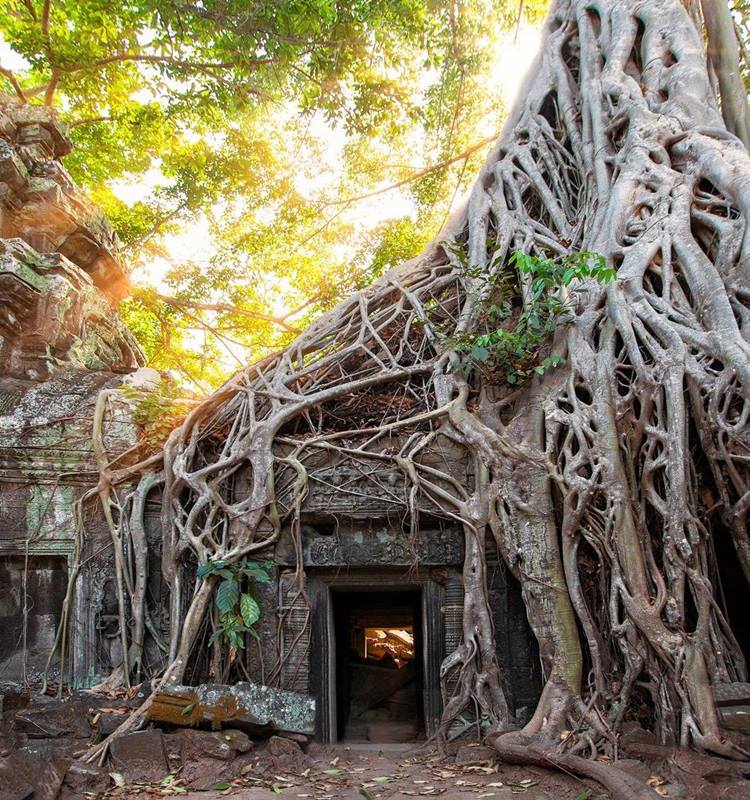
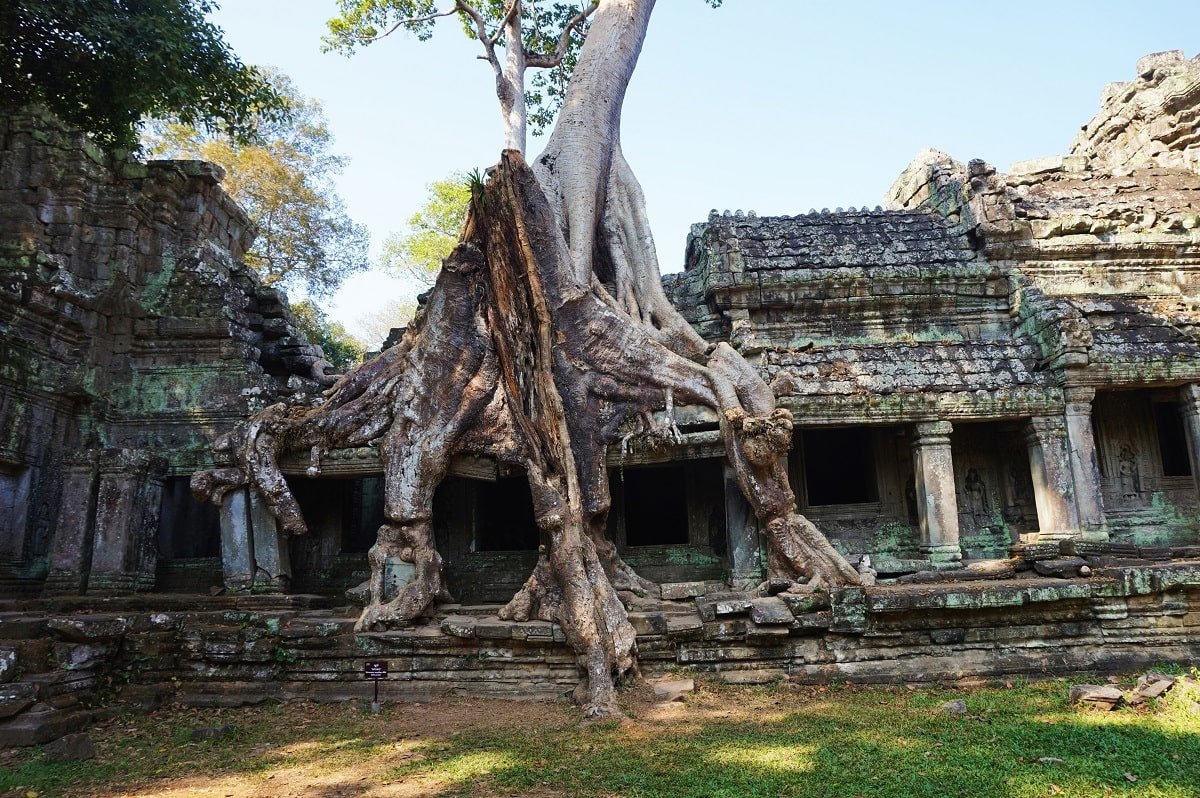

A bit about the history of the Angkor Wat
Situated in the northern part of Cambodia, Angkor Wat is a vast Buddhist temple complex. Originally, it was constructed as a Hindu temple during the early part of the 12th century. The man behind its creation was Emperor Suryavarman II, who ruled the region from 1113 to 1150. Covering an area of over 400 acres, Angkor Wat is considered the world’s largest religious monument.
The term “Angkor Wat” is derived from Khmer, the local language, and it means “temple city”. This name signifies its dual role as a state temple and a political hub for Suryavarman II’s kingdom. Although it was initially devoted to the Hindu deity Vishnu, by the end of the 12th century it had been transformed into a Buddhist temple.
Despite suffering considerable damage during regional disputes and under the oppressive rule of the Khmer Rouge in the 1970s, Angkor Wat continues to be a major tourist attraction in Cambodia. It’s situated approximately five miles north of Siem Reap, a contemporary Cambodian city with a population exceeding 200,000.
Angkor Wat’s design is intended to symbolize Mount Meru, which is considered the dwelling place of the gods in both Hindu and Buddhist traditions. Even though it fell into disrepair and was largely forgotten over time, it remained an architectural wonder and was never completely deserted. In the 1840s, French explorer Henri Mouhot “rediscovered” it and lauded it as being more magnificent than any remaining structures from Greece or Rome.
Today, Angkor Wat is recognized as a UNESCO World Heritage Site and continues to serve as a symbol of national pride for Cambodia. It also represents a beacon of hope for the country’s future.
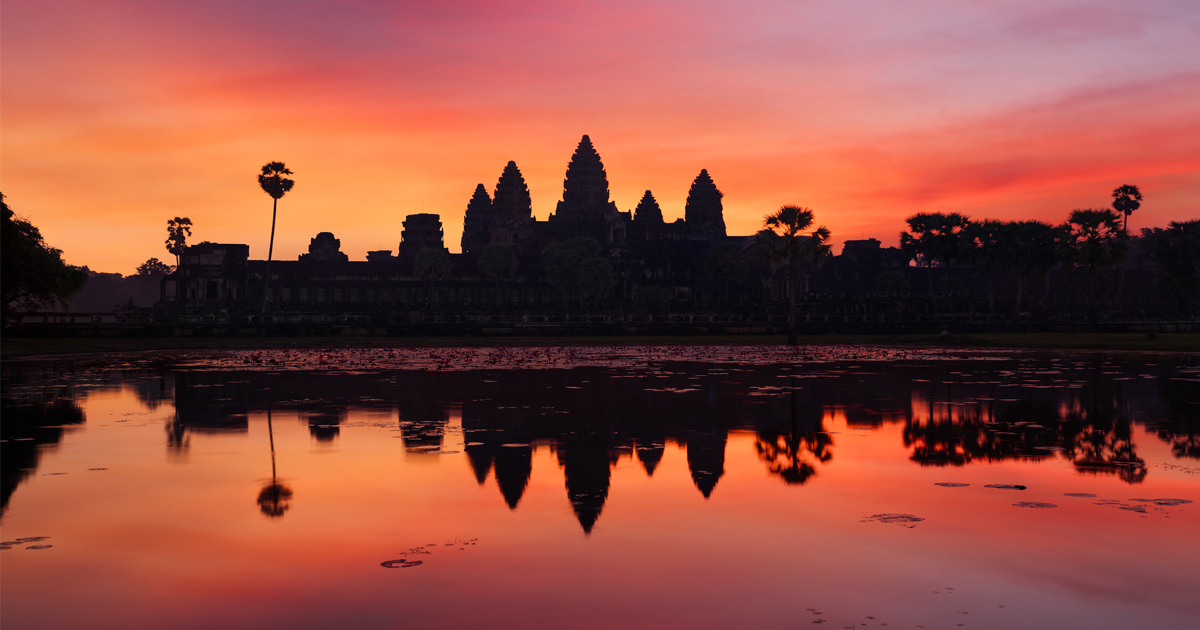
See the most beautiful sunset and sunrise at Angkor Wat
Experiencing the sunrise at Angkor Wat is an unforgettable event that many people dream of. As the sun slowly rises, it casts a gentle, otherworldly light on the temple complex, creating a sight that is both awe-inspiring and tranquil. The dawn sky can showcase a spectrum of colors, ranging from soft red to gentle pink or even blue. The left reflecting pool is the perfect spot for capturing the most iconic sunrise photo, offering a clear and symmetrical view of Angkor Wat and its towers.
As daylight unfolds, the temple complex unveils its splendor under the bright sun. But as dusk approaches, another captivating scene comes to life. The sunset at Angkor Wat is equally as stunning as its sunrise. The sky morphs into a vibrant canvas, casting a golden radiance on the ancient stone edifices. Phnom Bakheng, the first mountain temple in the Angkor Complex, is the most favored spot for watching sunsets. From this viewpoint, one can see the sun disappearing behind towering trees and enjoy a spectacular view of the Baray Reservoir during golden hour.
It’s worth noting that sunrise and sunset times change throughout the year. In winter, sunrise is around 5:30 AM and sunset is around 5:30 PM. In spring and fall, sunrise is around 5:30 AM and sunset is around 6 PM. In summer, sunrise is around 5:30 AM and sunset is around 6:30 PM. No matter when you choose to visit, witnessing the sunrise and sunset at Angkor Wat will undoubtedly be a memorable part of your trip.
However, Angkor is not just Angkor Wat, in the shadow of its glory stand other great temples. Among the most famous is Bayon, the main temple of the fortified city of Angkor Thom, built around 1200 on an area of more than 10 km2. Bayon is characterized by its forest of towers, depicting the face of the mythical Lokeshwara stylized in the form of the builder of the temple, King Jayavarman VII. There are a total of 54 towers and each has 4 faces of the king. The whole area of Angkor Thom has an area of 9 km2.

The Ta Prohm Buddhist temple, one of the most imposing structures in Khmer, stands out from other temples due to its untouched state. It was discovered completely swallowed by the jungle. The ruins are entwined with a vast network of tree roots that envelop the diverse stones like giant tentacles. This embrace by the jungle lends the temple a unique aura of mysticism, reminiscent of a world long forgotten.
A short distance away from the main complex, you’ll find the best-preserved temples of Angkor, including the elegant Banteay Srei. This temple was recently made accessible to the public following a demining operation. Despite its relatively small size compared to other Angkor monuments, Banteay Srei is often regarded as the most beautiful temple in Angkor, thanks to its intricate and delicate reliefs.
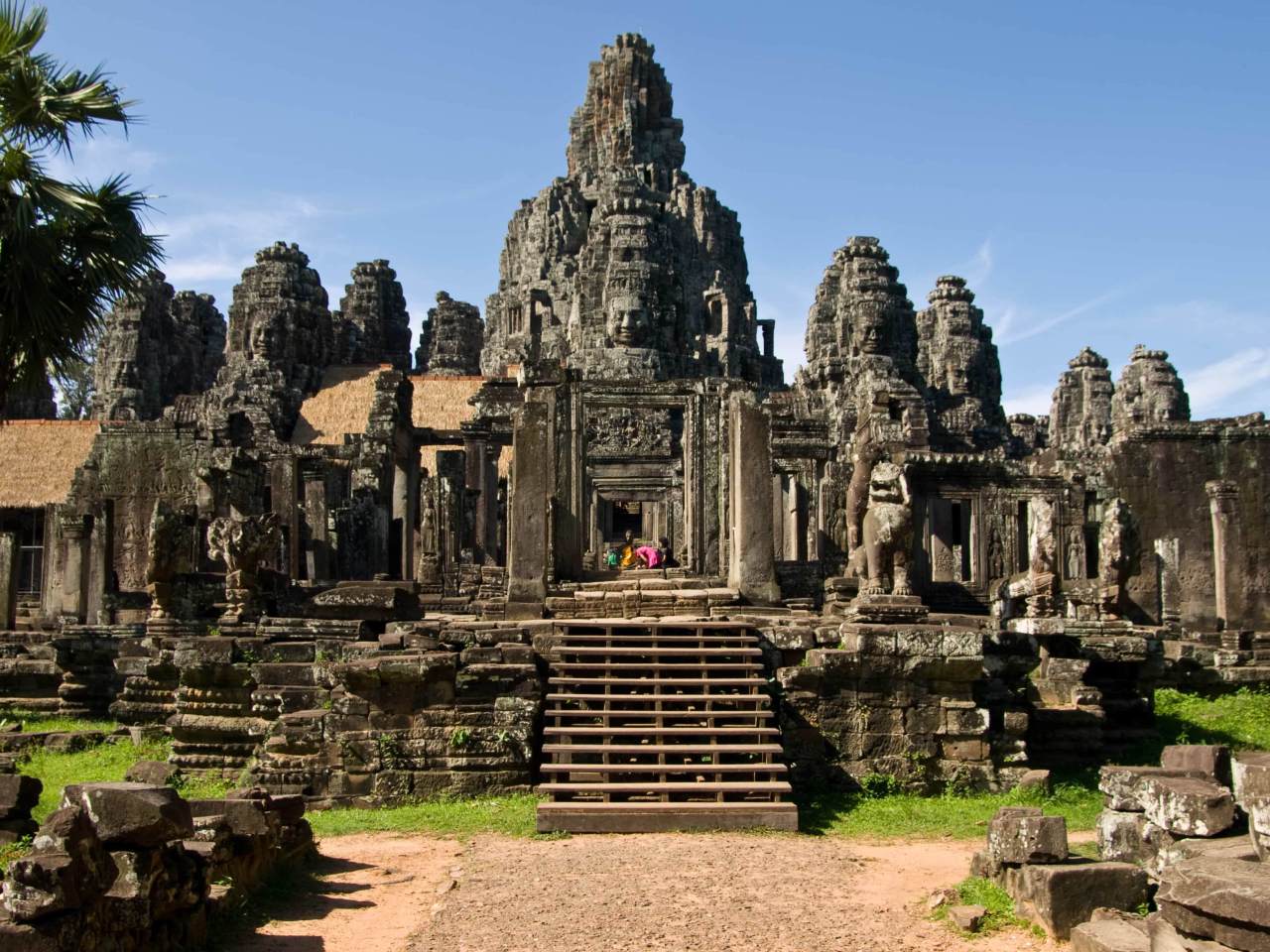
Angkor is undoubtedly one of the most important archaeological sites in Southeast Asia, and unfortunately, it has also affected the turbulent history of Cambodia. UNESCO has created an extensive program to save the monument, which has unfortunately also been inscribed on the World Heritage List in Danger since 1992. International efforts to save him have made it probably the largest workplace for rescuers and archaeologists in the world.
The imposing city of the defunct Khmer Empire thus attracts with its beauty and uniqueness, awakens the imagination of its visitors and the national pride of ordinary Cambodians.
How to get to Angkor Wat from Siem Reap
There are many tours available all around Siem Reap city and every hotel is able to book a tuk-tuk driver to get you there.
Never buy your tickets before arriving at Angkor Wat Ticket Purchase Centre (outside the complex) on your way there. There are 1, 3 and 7-day tickets available as the extremely large complex might need more time to see both the sunset and sunrise and explore the whole site thoroughly.
Note: Ask the Tuk Tuk driver to drive along the Siem Reap River on the right-hand side on the way to Angkor Park. The route is so much nicer than through the city along the main road.
What time should I arrive to see the Sunrise above Angkor Wat?
It is necessary to hit the road from Siem Reap at around 4:00 AM as the journey itself takes around 20-30 minutes by tuk-tuk and you may need to buy your ticket if you haven’t done before. From the parking area at the Angkor Wat complex, it is another 800m walk to the water lily pond.
Travel advice: Exchange the phone number with your driver as it will make it so much easier to find him on your way back.
There will be 2 different tour circuits available. See the Angkor Wat map below.


